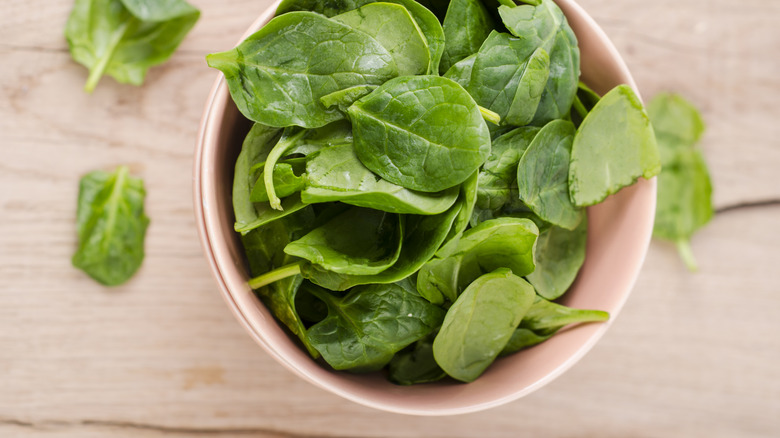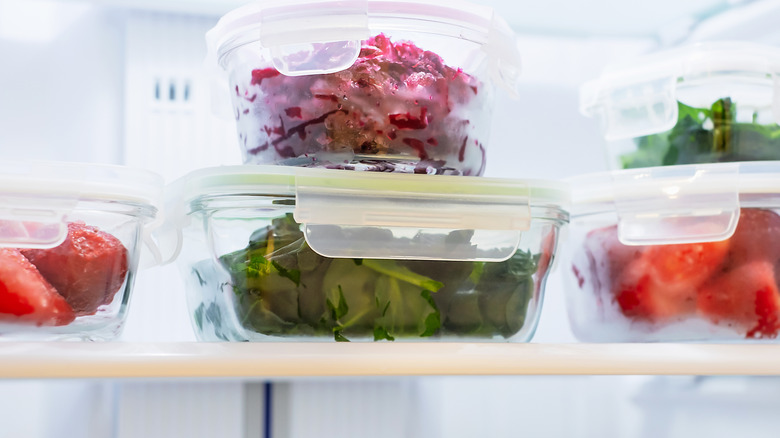The Key To Keeping Spinach Fresh Is Probably Already In Your Kitchen
If you have spinach in your fridge currently, what is its status? Is it still crisp and fresh? Or is it, as many of us will find, already rotting, its leaves turning to mush and filling the bag with green slime? If your answer is closer to the latter, worry not. There is a very simple step you can take for your next bag or container of spinach that can prolong its life, so you don't have to go picking out more nasty pieces than not next time you make a smoothie.
If you have paper towels in your kitchen, as most, if not all of us do, then you have the key to keeping spinach fresh. The enemy to crisp, unwilted spinach is moisture, and you can combat that by loosely wrapping your greens in paper towels before placing them back into the bag or plastic container.
It's actually best if you remove the spinach from its packaging and then insert two to three paper towels so that, when you replace the spinach, it sits on top of them. This will help absorb moisture, pulling it away from the green leaves, and keeping them from turning into verdant goo. If you can see the paper towels themselves are starting to get quite damp, simply repeat the above process with fresh, dry ones.
Extend your spinach's life with these other tips
If you bought bagged spinach, it typically doesn't come in resealable packaging, so for the longest life, transfer those leafy greens to a zip-top bag (lined with paper towels, of course). Your plastic containers of spinach can stay where they are, provided you keep the lid on securely while it's in the fridge. The crisper drawer is the best location for fresh spinach, since its environment is calibrated to be ideal for produce. Spinach will stay good under these conditions for up to 10 days, but you should toss the bag if more leaves start to look slimy than not.
Finally, you can absolutely freeze spinach to extend its life indefinitely and get the same health benefits from your frozen veggies, but you'll probably want to eat it within a year for the best quality. It's really easy to freeze spinach — you can literally just put it into a freezer-safe bag, push out as much air as possible, close it up, and toss it in. If you're feeling extra motivated, you can blanch it before bagging it, but it's not necessary. Just keep in mind that freezing it will change spinach on a cellular level, so it won't have the same texture as fresh. For that reason, it's best to use frozen spinach in soups, stir-fries, casseroles, or even creamed spinach recipe, versus a fresh spinach salad.

